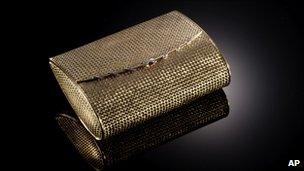China police arrest man over Forbidden City art theft
- Published

The stolen items were on loan to the museum from a private collection in Hong Kong
Police in China have arrested a man they say broke into Beijing's famed Forbidden City, and stole seven pieces of art from the Palace Museum.
Police said the man was detained in an internet cafe and that he had confessed to the robbery - the first theft from the former imperial palace in 20 years.
The stolen items - which were on loan to the museum - included a purse and women's make-up cases.
State media reported some pieces had been recovered but gave no details.
The valuable items were stolen from one of China's top historical sites in the heart of Beijing.
News reports on Wednesday said the thief got into the complex by knocking a hole in a wall.
The stolen items date from the beginning of the last century and are said to be worth millions of dollars. Some are encrusted with precious stones.
Embarrassment
One official at the Palace Museum has blamed a lapse in security, and said improvements would be made.
"For this to happen here shows us that No 1, we need to speed up the modernisation and installation of our security systems," said official Feng Nai'en at a news conference.
"No 2, we need to investigate carefully and find out if we can implement better, more modern and more sophisticated security systems."
The items were on loan from Liangyicang, a private collection in Hong Kong.
The Beijing News reported that the Hong Kong museum had not insured the items for as much as it could have because it believed they would be safe in Beijing.
The Palace Museum is based within the Forbidden City, home to the country's emperors during the Ming and Qing dynasties.
The complex is made up of courtyards, palaces and gardens. It became a museum in the 1920s after the fall of the last emperor Puyi a decade earlier.
- Published17 January 2011
- Published19 October 2010